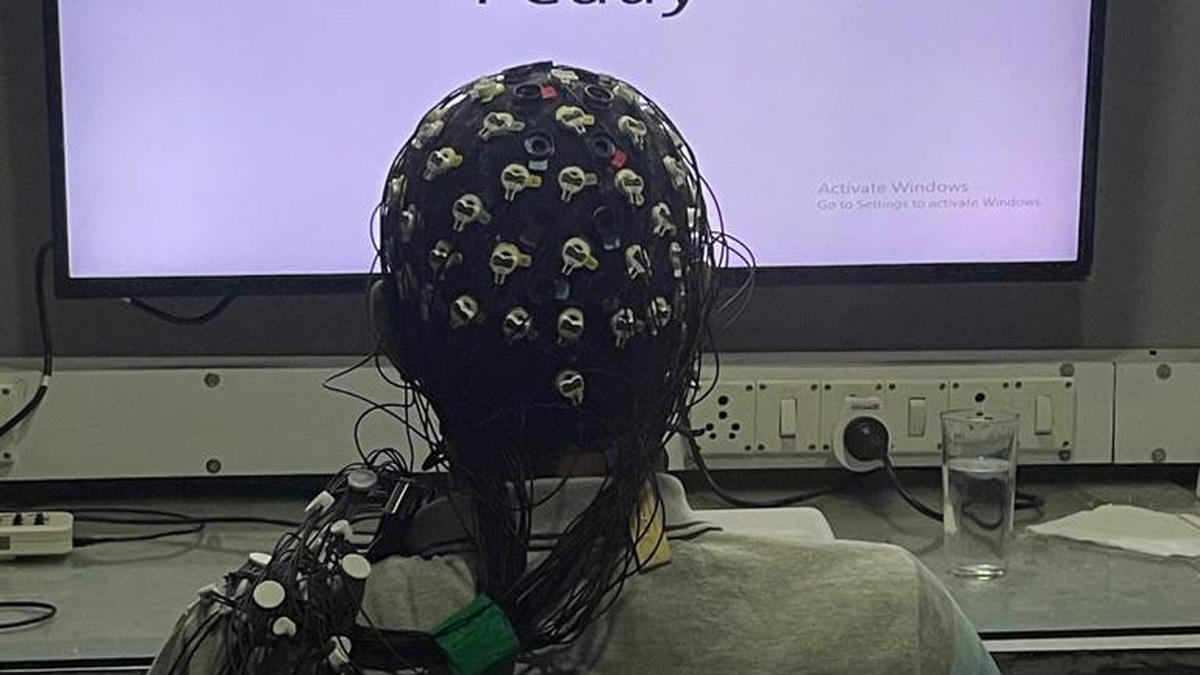Pictures shows a student at the IIT Delhi design lab. | Photo by Special Arrangement
The design department at the IIT Delhi is on a high with the second batch of students expected to stream in for its PG certification programme in User Interface and Experience set to take off on March 16. The first batch of 75 students, a mix of bachelors and masters who all had industry experience, have graduated and IIT Delhi is ready to take in the second group. Graduates with at least one year of experience in UX or Management are preferred.
The course promises to incorporate psychological insights and neuroscience taking the UX and UI in India to the cutting edge. For instance, understanding human responses and their triggers can help designers create more effective e-commerce designs.
Neuroscience maps the brain using devices originally made for medical diagnostics to understand and predict human responses with data and real insight. This knowledge is now used to solve business problems including in the UA – UX in design. “Currently neuroscience is being used a research tool. We have several PhD students who are developing models of use in different situations. We have also applied these in industry contexts and done consultations with leading companies. For classroom, we are still in a demo phase. We expose the students to how these tools can be used,” Prof Jyoti Kumar, Head, Department of Design IIT Delhi, said to The Hindu.
On his research focus, Prof Kumar said he had been using neuroscience to study the mental workload in the doing of digital tasks and persuasive decision-making during online purchases. “As digital systems are ubiquitous now, they form part of hospital systems, automobiles, banking and so on. Some of these contexts are already demanding to the human brain in terms of the amount of information they have to process. If the systems are not designed to optimally use the human mental capacities, the overburdened brain will cause more errors some of which could have long-term financial, personal or social consequences. Like poor designs of digital systems in automobiles could cause accidents if they do not take care of the mental workload on the driver in specific situations,” he elaborated.
The knowledge and skills of UI-UX design has applications in various industries where digital systems are slowly becoming crucial to the functioning of the enterprise. “As increasingly more and more systems are developing interfaces we need specialized designers who understand the user’s needs and makes the designs easy and enjoyable to use. Often today the entire brand is being built through the user experience on digital platforms,” he said.
During his intense interactions with students, Prof Kumar is at pains to explain how UI interfaces deliver a certain experience which is crucial to the brand building and profit of a company. In a typical class, he would cite hypothetical scenarios like how the UI of an aircraft in the cockpit will be usable in stressful situations by the pilot. Neuroscience does give more precise answers than observations and interviews.
Regarding the cost factor in India in terms of devices and instruments used for research, he said they were not used for all types of applications of UI-UK. “This tool is helpful when we need to design for very critical or special cases where we need to precisely understand how the user’s brain has interacted with the interface. It helps to understand how the brain works on a given website in a certain context,” he observed.
At the IIM Ranchi campus where UI-UX course is an elective one, Prof Tanushree Dutta talks about how a typical class would have “a discussion on experiments, followed by understanding why the brain did what it did, followed by other related examples or a case study if it’s available”. She says, “Neuroscience insights can help change consumer experience through better UA-UX.”
“We have a Mind Lab in our Institute where we encourage our students to conduct small experiments just to get a better understanding of things. Experiments are usually the ones that have been conducted by other researchers or by us,” she detailed. The Mind Lab at the institute is well equipped with neuroscientific tools and techniques to promote research towards an objective understanding of human behaviour. For PG and Executive MBA students across disciplines, the elective course enhances their job opportunities and they learn a new perspective. IIM Ranchi plans to upgrade its elective course into a certification.
Anil Pillai, consultant at Terragni which does UX research, believes that looking ahead, UX research in India is poised for a transformative evolution. “UX in India is about to grow up,” he says opening up vast opportunities for students taking these courses at various institutes.
Although many entities have entered the neuroscience domain of UI-UX, most have not developed into full-fledged facilities. A glance at the reviews of the BITS design institute in Mumbai, reveals that students want to enroll but have found that the full infrastructure is not in place and therefore they would hesitate to be part of the first batch. The demand for UX design qualified human resources is driven by the digital and e-commerce requirements.
Published – February 14, 2025 08:00 pm IST
